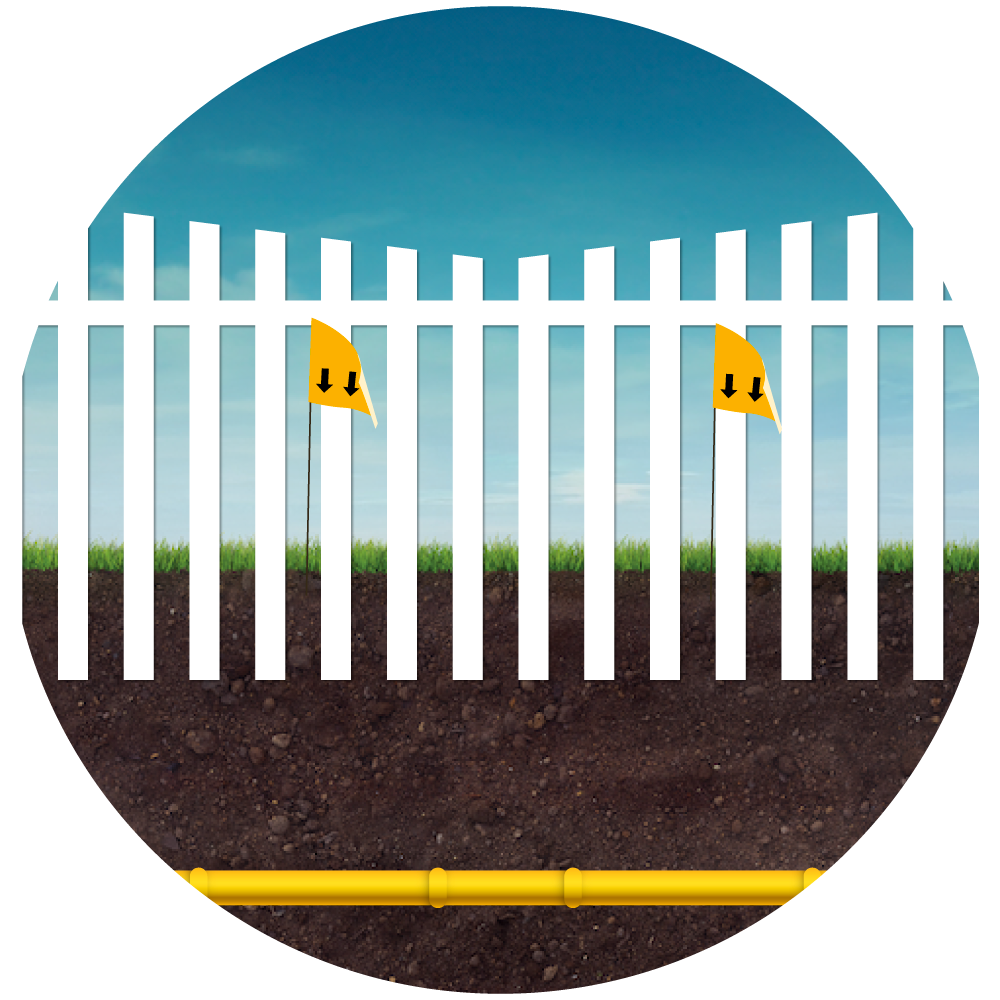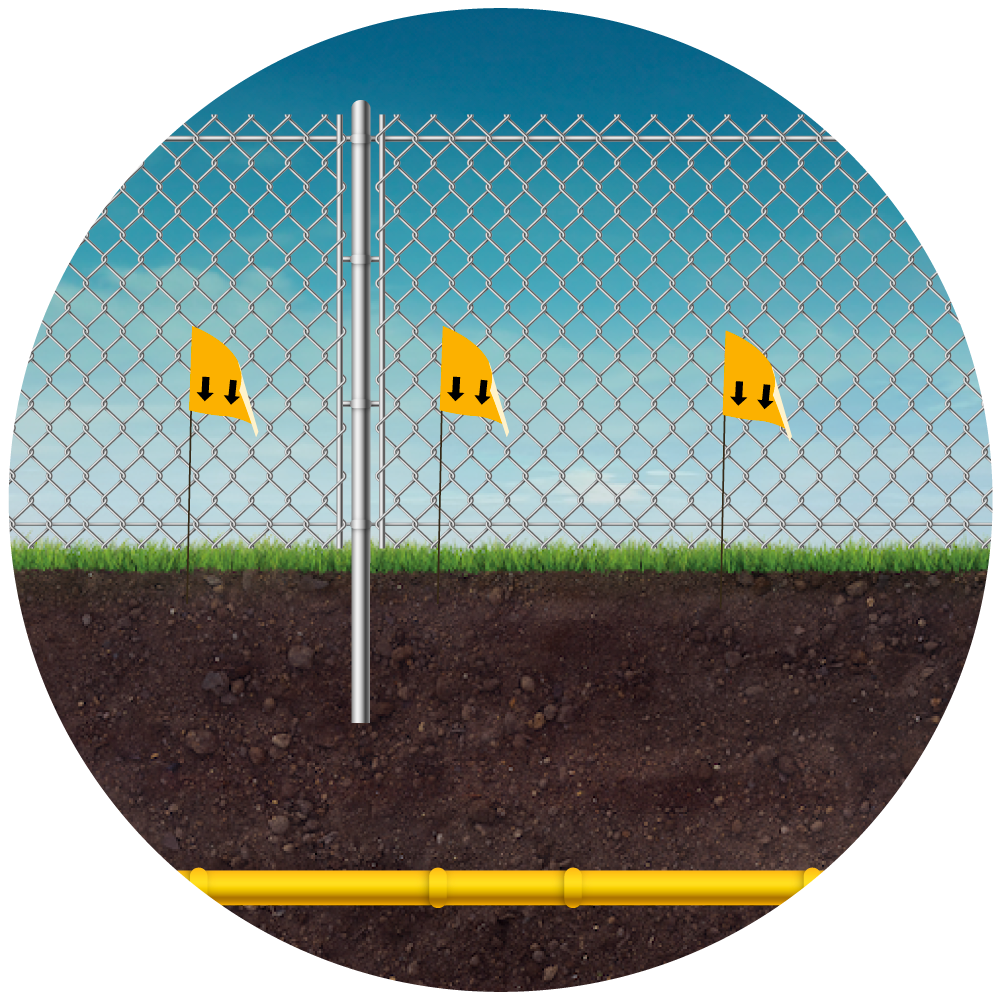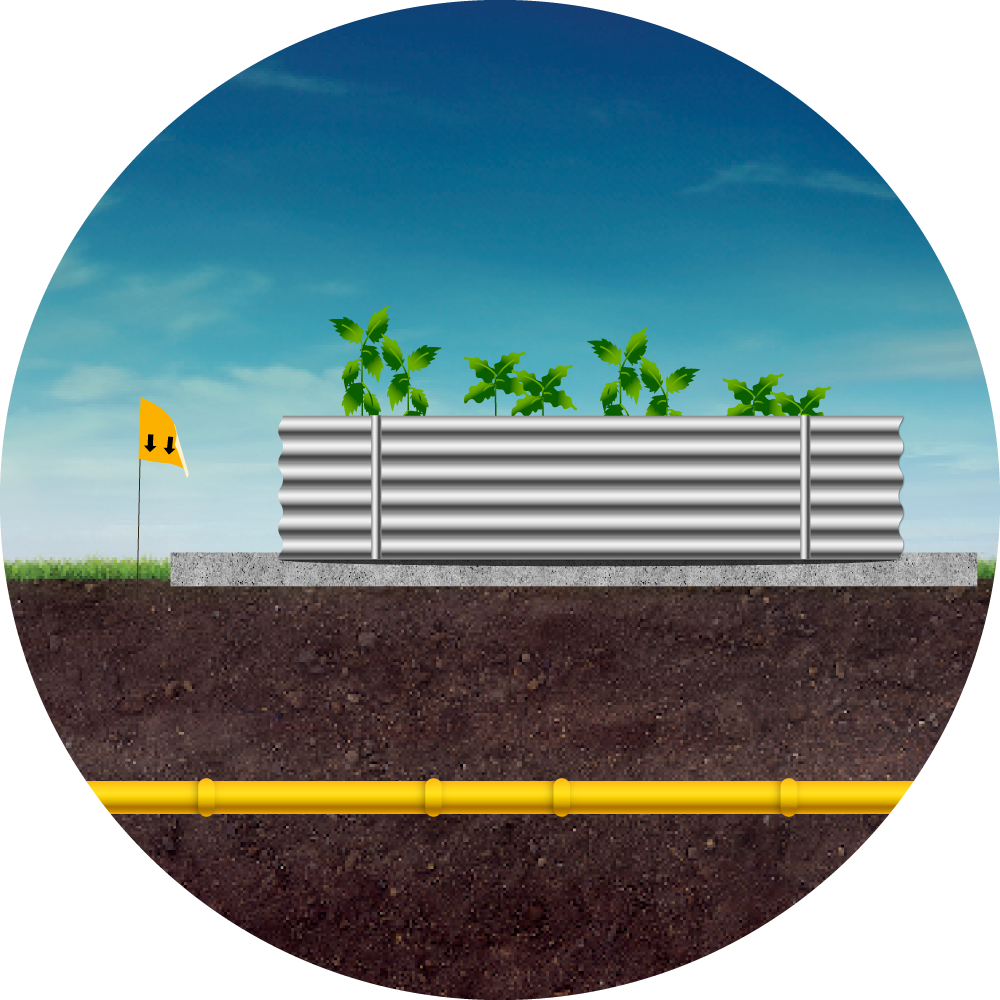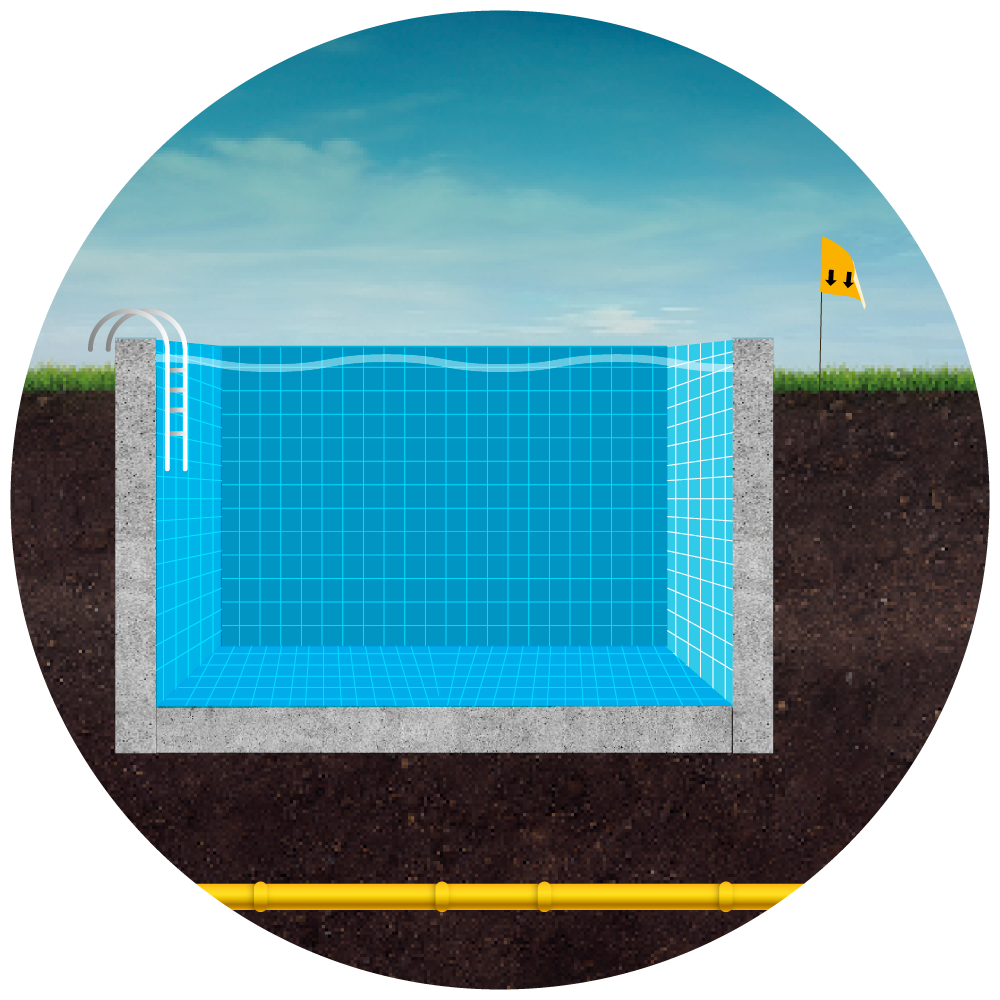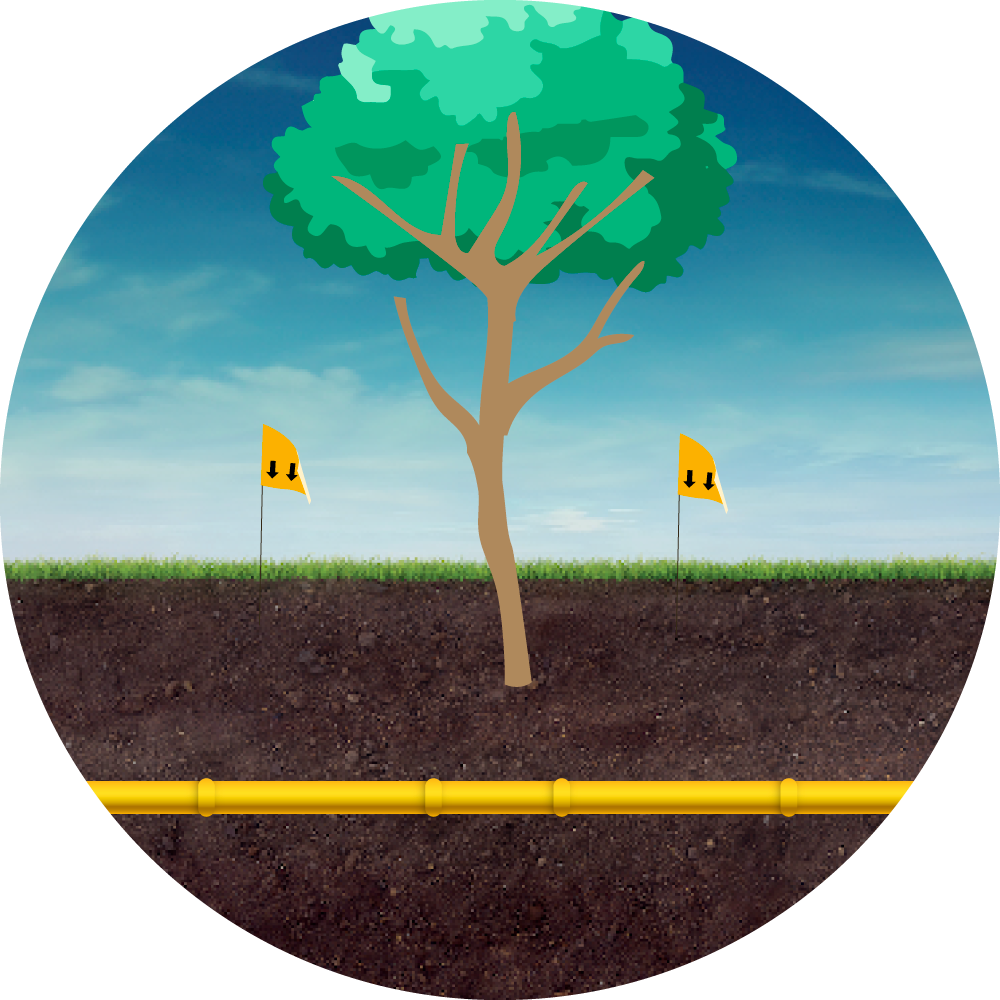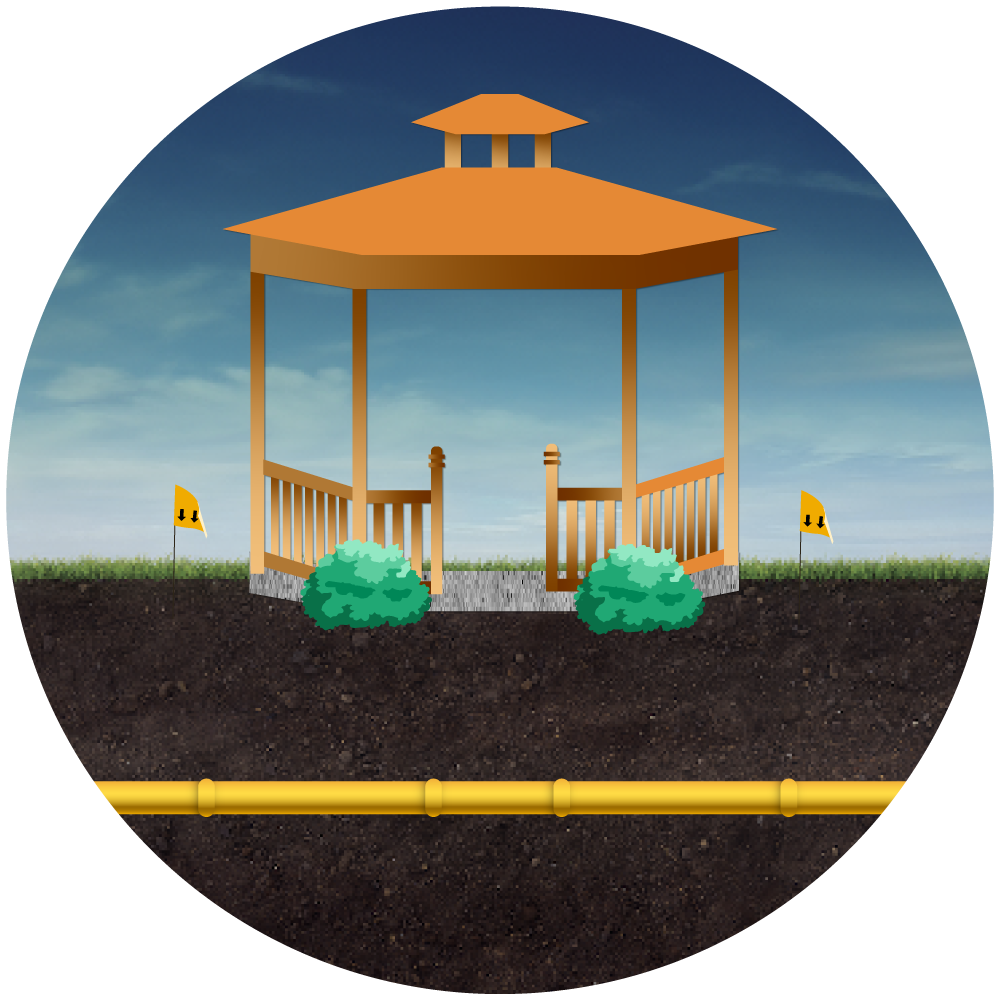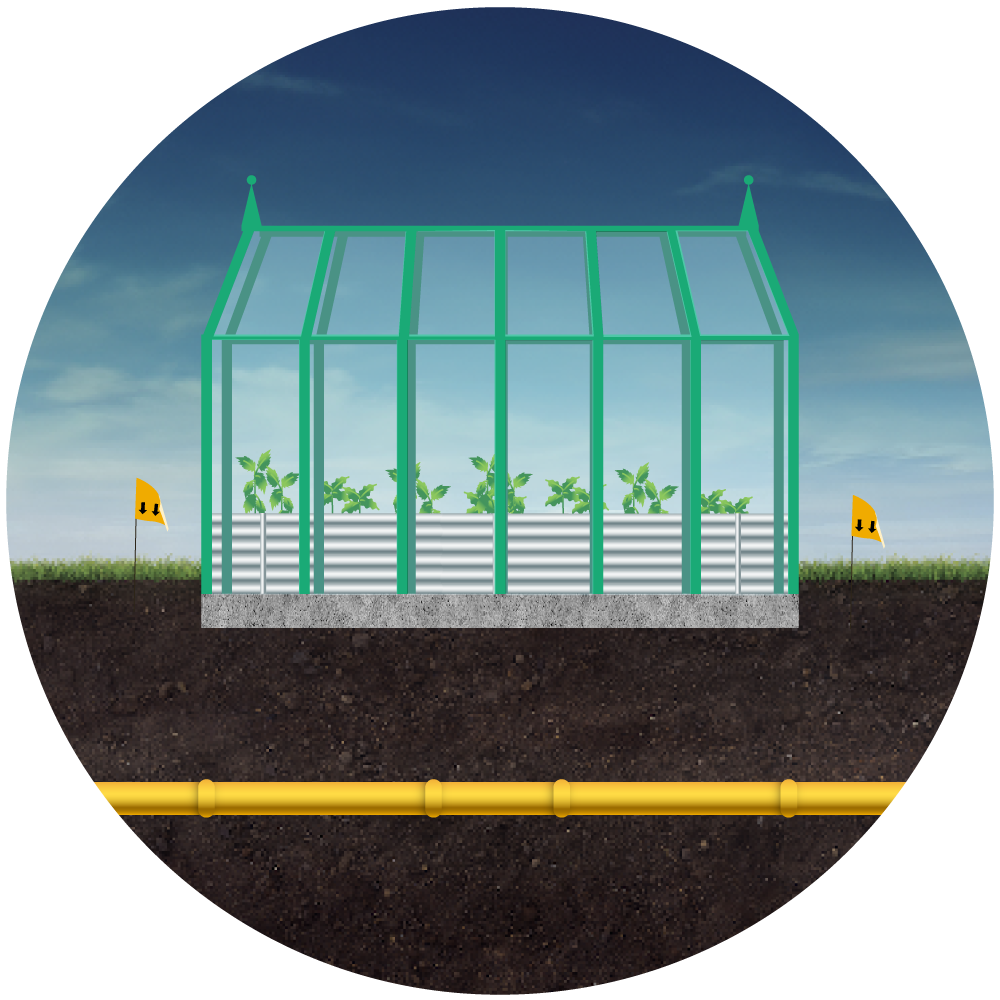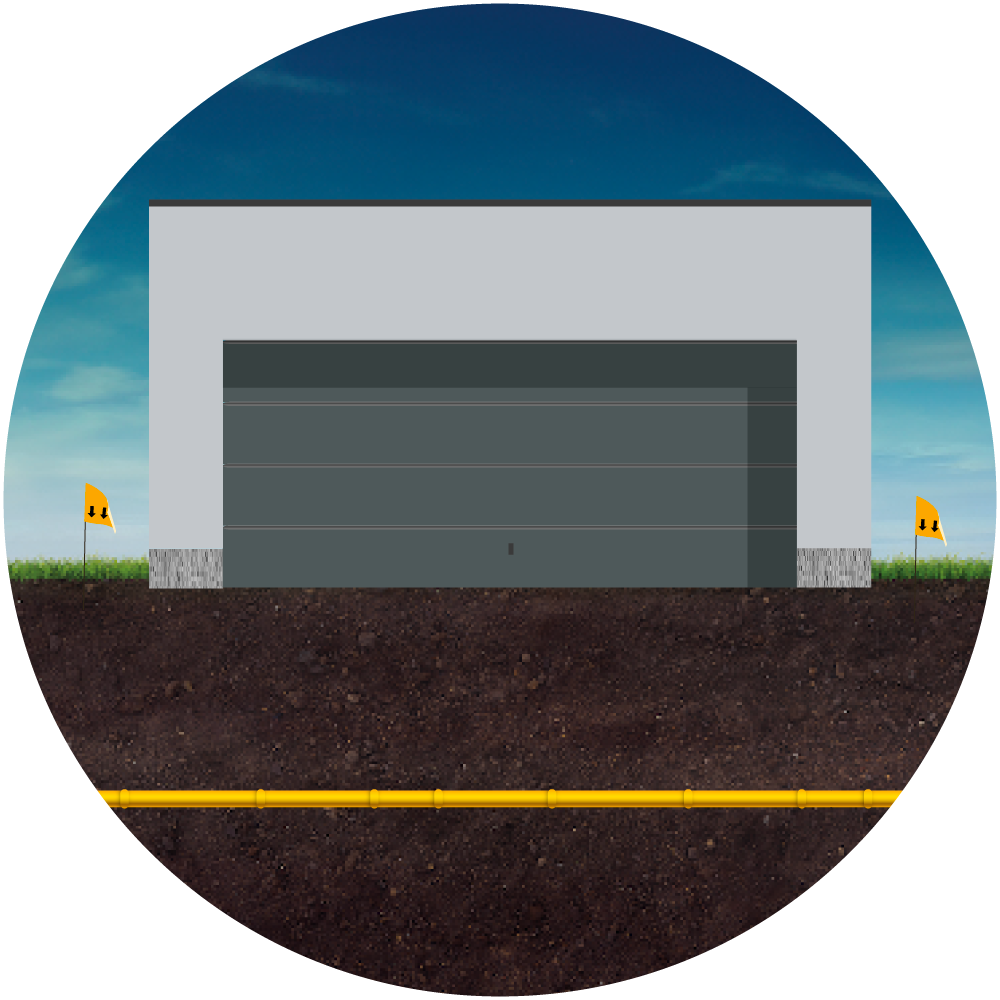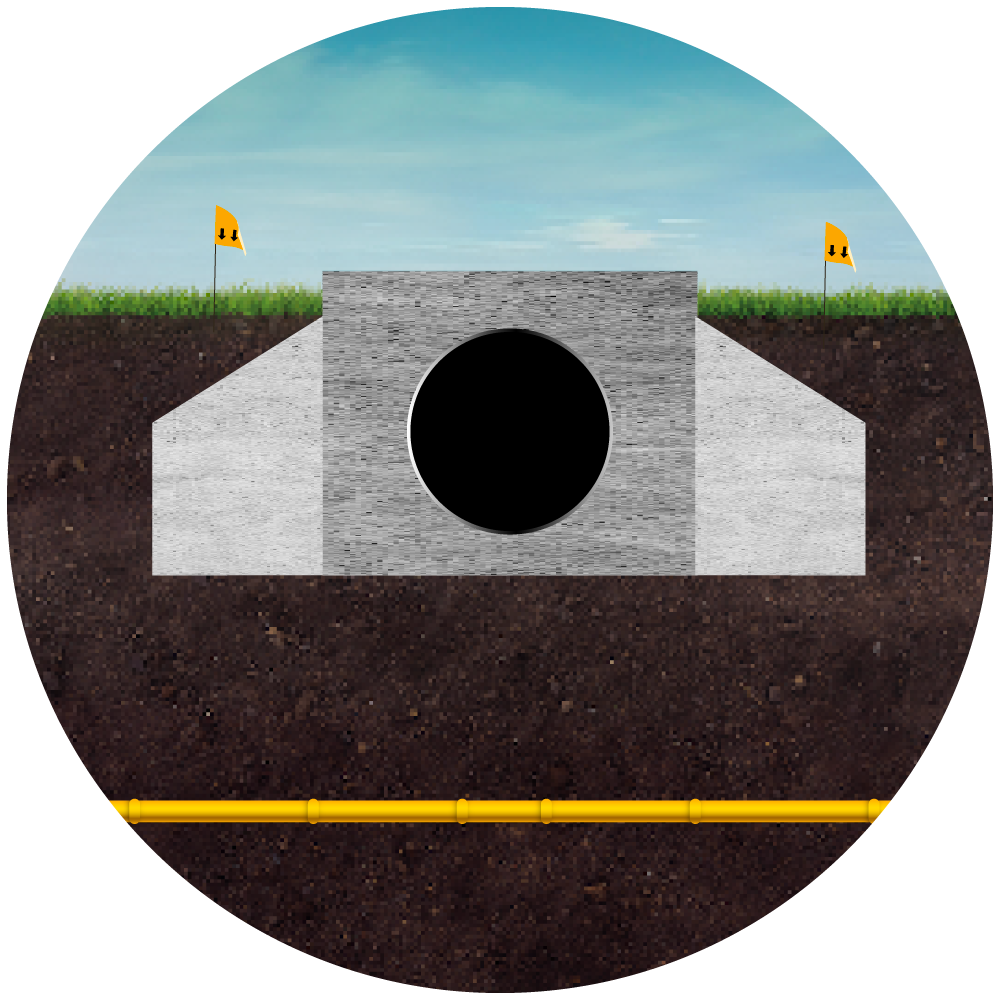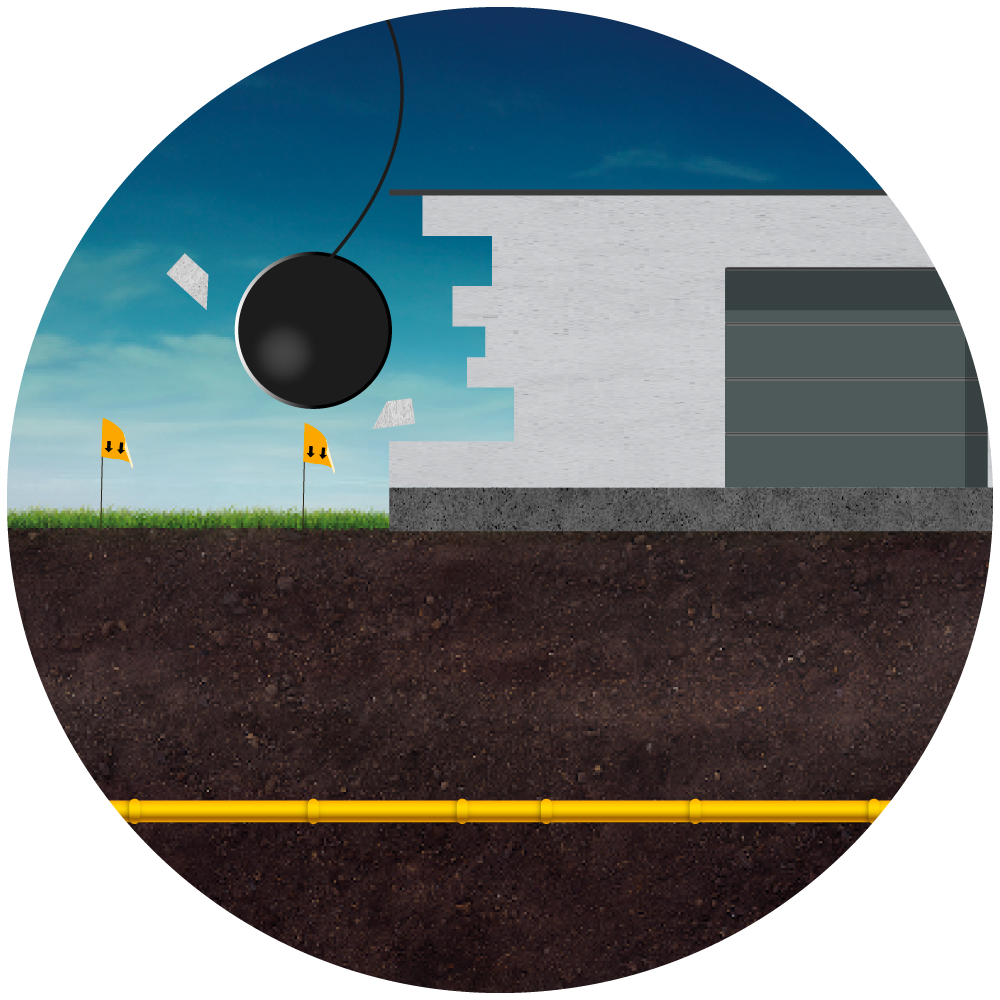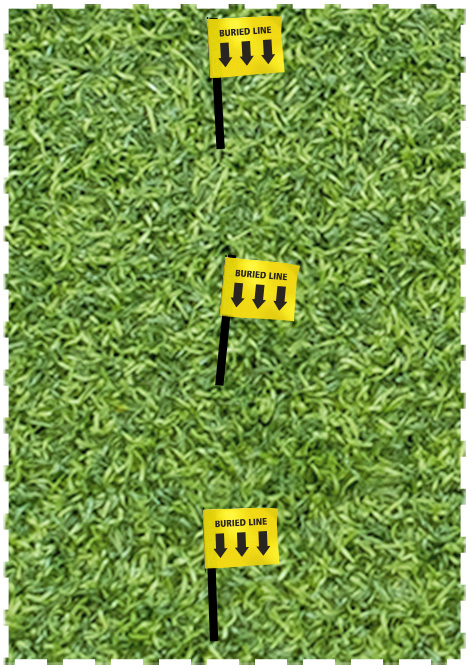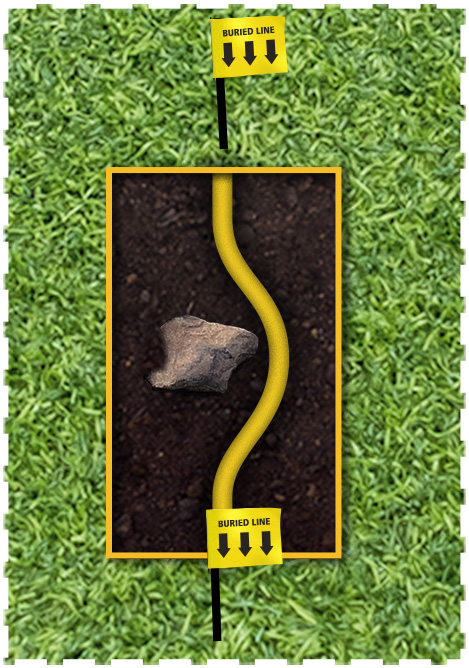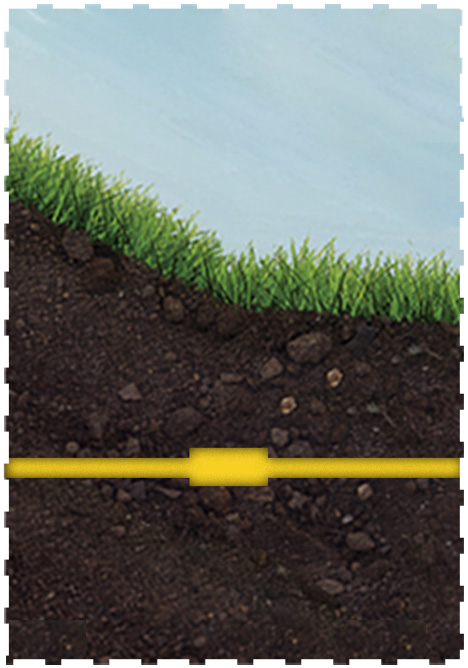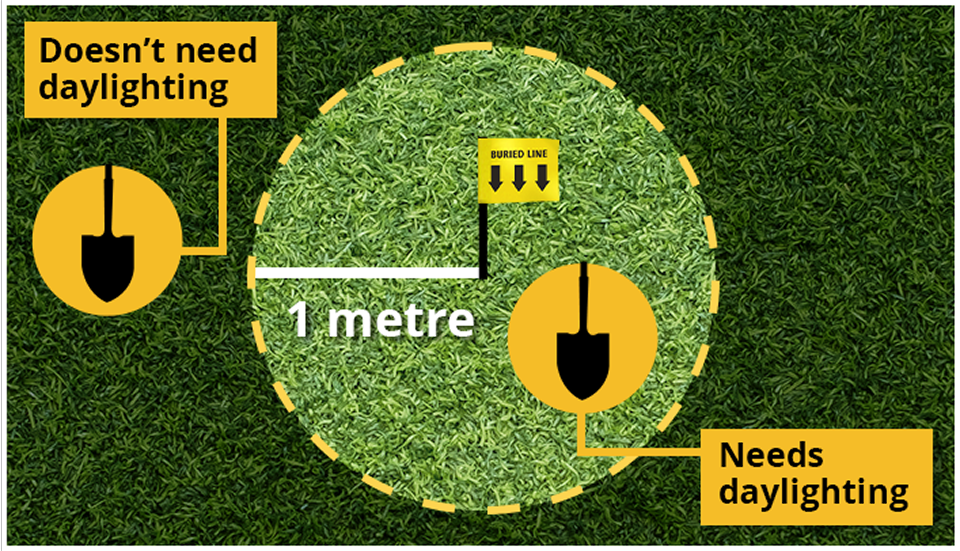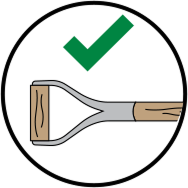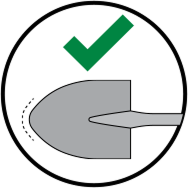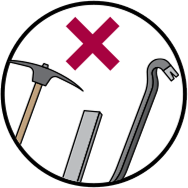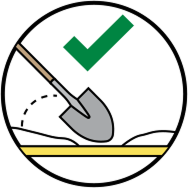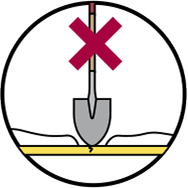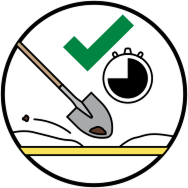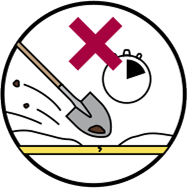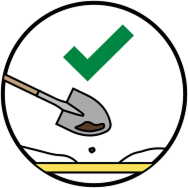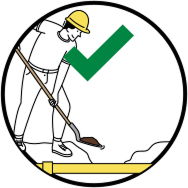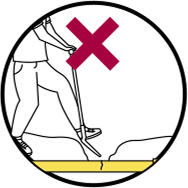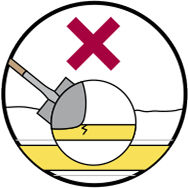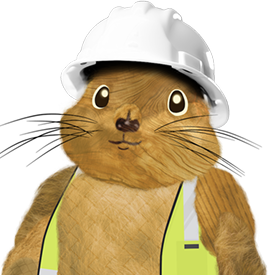
1 Get aline locate
Before any ground disturbance work, ensure you plan ahead. Submit a free line locate request three business days prior to your project. In Saskatchewan, a line locate must be performed if a utility line may be impacted and work cannot begin until all utility providers have marked their lines.
Common projects that require a line locate
Fences
Whether you're planning a fence that is made of wood, composite, chain link or wrought iron, the posts from all fence types must be in a location greater than 0.6 metres (2 feet) from a natural gas line. Clearance is reduced to 0.3 metres (1 foot) when hand digging/hydrovacing.
Landscaping
Minor and major landscaping projects can create a hazard or encroachment when built over a natural gas line. This can include shrubs, gardens, driveways, parking pads, ponds or inground pools.
Trees
Trees start out small but grow over time. The roots can connect with the utility lines below and the branches can interfere with the power lines above. The depth of the hole you dig to plant a small tree may also be closer to an underground utility line than you think.
Learn more at SaskEnergy and SaskPower.
Structures
Structures that can contact an underground line can be as simple as a sign post. Building an unenclosed structure such as a deck, play structure, gazebo or above ground pool near utility lines, especially natural gas, can create an encroachment or a hazard. An enclosed structure such as a shed, hot tub, greenhouse or grain bin can prevent utility personnel from safely maintaining or repairing infrastructure and trap natural gas if there is a leak.
Buildings
Getting a line locate is the first step but you may need permission to proceed with your project. When constructing buildings such as a garage, large storage shed, house, workshop, sunroom, barn or quonset, plan ahead to ensure the distance you have allowed from the foundation to the utility lines is acceptable.
Culverts
There are thousands of kilometres of utility lines located throughout the province – under roadways, railroads and trails. Whether you are installing a culvert in town or in the middle of nowhere, a line locate is required.
Demolition
When tearing down, destroying, breaking up or razing a building, a line locate is required to determine if underground lines are present. The service lines may not have been completely removed or lines are active to serve a neighbouring area.
2linesMarked
A technician will mark the location of the underground utility lines using coloured flags. Once complete, a record of line locate will be provided by email. The record of line locate will provide information on how to proceed in the proposed work area.
Line locates are only valid for 30 calendar days or while paint markings are visible, whichever is less. If your project is delayed, you will need to request a new line locate.
Universal colour code for marking buried facilities
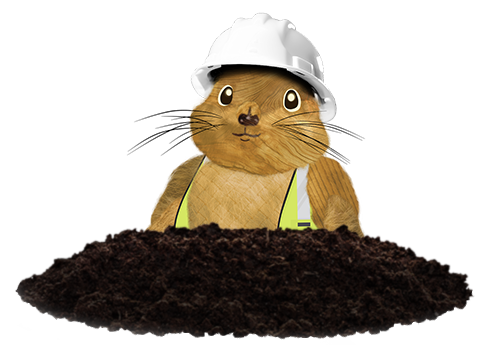
3get permissionto proceed
Permission or a permit may be required from SaskEnergy and SaskTel when digging near buried lines.
Permission to proceed is required when:
- Work is within a SaskEnergy easement or 1.5 metres of a natural gas line
- Work is within a SaskTel right-of-way or 1 metre of a SaskTel cable
4working next toburied lines
Review your record of locate and make sure the work area is accurately shown. Utility lines don’t always run in a straight line and may have moved through erosion or gradual ground movement.
Remember, flags are placed as accurately as possible and indicate that a utility line is nearby. The flags may not be located directly above the utility line.
5hand diGsafely
Daylight the line if digging within 1 metre on either side of the flag. Daylight means to expose the utility line by hand. Learn more below.
Daylighting Digging Tips
Hand expose and verify where the utility line is located
Daylighting can be done safely with hand tools or a hydrovac service. Hydrovacing uses a high-pressure water and vacuum process to safely remove the dirt from around utility lines.
You can start using mechanical equipment nearby only after you’ve safely exposed the lines.
1. Use the right tools
- Use a shovel with a wooden or insulated handle
- Use a round spade shovel
- Never use sharp tools
2. Proper angle
- Dig at a shallow angle (45 degrees)
3. Take your time
- Don’t rush the project
4. Make it visible
- Remove small amounts of dirt until the utility line is visible
5. Be careful
- Don’t step or jump aggressively on your shovel
- Many lines are plastic and have a tracer wire that can be damaged easily

